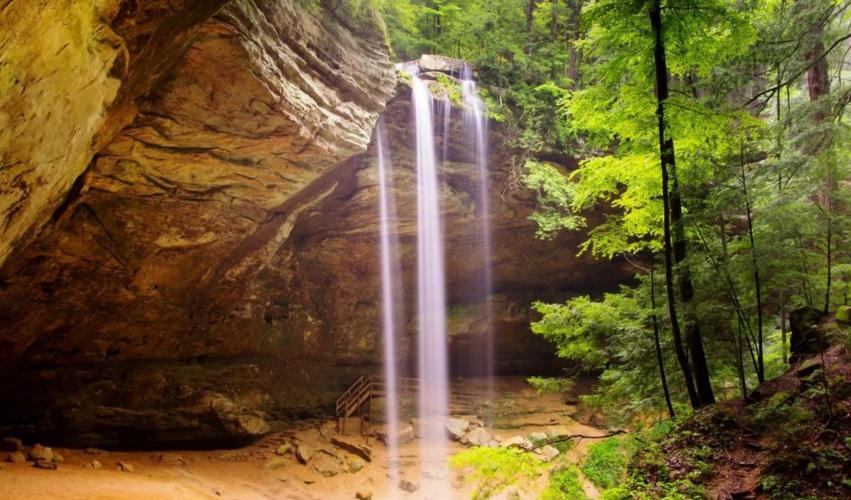
Hocking Hills offers ideal tourist destination during pandemic, SBDC study says

The Hocking Hills, a nationally known destination for camping, hiking and outdoor activities, has continued attracting tourists despite the coronavirus pandemic, according to a marketing analysis conducted by Ohio University’s Small Business Development Center (SBDC) in collaboration with the Hocking Hills Tourism Association.
According to Lissa Jollick, regional director of the SBDC at Ohio University’s Voinovich School of Leadership and Public Affairs, the SBDC conducted the report after learning about the struggles among lodging and other business owners in the area. The study will help identify target markets for regional business advertising. By working directly with the Hocking Hills Tourism Association, the SBDC was able to produce a high-quality market research study that can be utilized by all businesses in the Hocking Hills, including lodging, entertainment and hospitality-oriented businesses.
“I cannot give the SBDC team and especially Lissa Jollick enough compliments,” said Hocking Hills Tourism Association Executive Director Karen Raymore. “The report provides a geographic roadmap for new markets as well as expanding awareness of where the current guests reside. This information is not only valuable to the destination marketing organization but also to the tourism businesses.”
The business shutdown that began in March due to the pandemic was felt deeply in the Hocking Hills area, where most businesses depend on tourists. As the economy begins to recover, the area gains a tremendous market opportunity as consumers seek to escape their homes into a relaxing outdoor environment where it is easier to social distance.
“Hocking Hills offers a prime location to people who are looking to enjoy the great Appalachian outdoors and also want to self-isolate,” Jollick said. “Many cabins are located on properties that provide much greater safety compared with resorts and hotels where population density may be greater.”
The project studied the demographics and psychographics of a sample set of overnight visitors provided by Hocking Hills cabin owners. The sample set from 2019 reservations is based on ZIP codes. The SBDC generated the report using suitability and spatial analysis to narrow down potential customers to 79 ZIP codes and to organize layers of information into visualizations using maps and 3D scenes.
The study concluded that 57% of the reservations were made by travelers who live three to four hours away and who are clustered around suburbs of Cleveland, Columbus and the metro areas of Dayton or Cincinnati. Although the study focused on households with a median income over $75,000, households with median incomes below $75,000 are still considered part of the market opportunity for Hocking Hills businesses. The report identified a tremendous opportunity to market to household incomes below $75,000 – one that may not have been fully explored in the past.
The study will be shared with all Hocking Hills Tourism Association members and is available to all SBDC clients. For additional information contact Lissa Jollick at jollickl@ohio.edu or click here to become a client.
Ohio University SBDC is a program of Ohio University’s Voinovich School of Leadership and Public Affairs. Voinovich School research assistant Jessica Schaudt assisted with Geographic Information Science (GIS) software to conduct the analysis and SBDC Business Advisor Jessica Kopelwitz helped compile the study.
